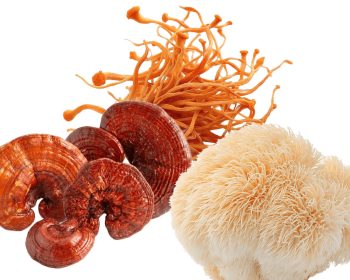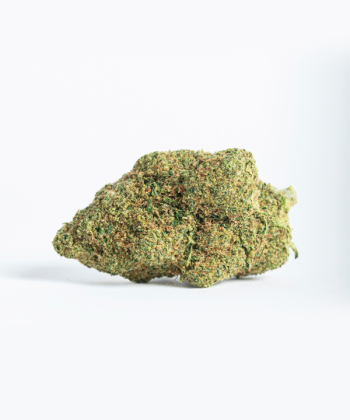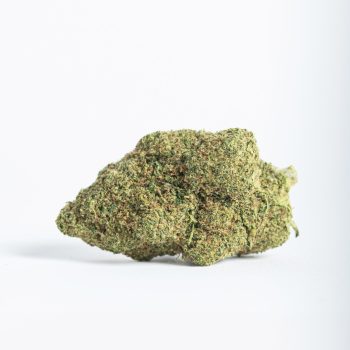The endocannabinoid system is a fundamental but little-known component of our body that plays a crucial role in the regulation of numerous physiological functions.
Since its discovery in the 1990s, scientists have been uncovering the complexity and importance of this system in maintaining homeostasis (the ability of an organism to remain stable despite changes in the environment). But what exactly is the endocannabinoid system and how does it influence our well-being?
In recent years, interest in cannabis-derived products, such as cannabidiol (CBD), has increased significantly. This interest has prompted further research into how these compounds interact with the endocannabinoid system through their multiple properties.
Understanding how this system works is essential to fully appreciate how CBD and other cannabinoids can influence our internal state. In this article, we will explore in depth what the endocannabinoid system is, how it works, and why it is so relevant in the context of CBD products.
How was the endocannabinoid system discovered?
The discovery of the endocannabinoid system (ECS) was a gradual process that began with research into the active constituents of cannabis and progressed with the identification of cannabinoid receptors and their endogenous ligands.
The first significant step was taken in 1964, when the isolation of tetrahydrocannabinol (THC), the main psychotropic component of marijuana, was achieved by Dr. Raphael Mechoulam and his team¹. This finding allowed scientists to investigate how THC interacted with the human body, as the reason for marijuana’s effect was previously unknown.
A little later, in the late 1980s, specific receptors were identified in the brain that bind to THC². These are mainly found in the central nervous system. Later, the CB2 receptor, located mainly in cells of the immune system³, was discovered.
Following the identification of the cannabinoid receptors, the search for endogenous ligands that activate them began. In 1992, anandamide, the first known endocannabinoid, was discovered, followed by 2-arachidonylglycerol (2-AG)⁴. These compounds are substances that are generated by the body itself and have a molecular structure very similar to that of the cannabinoids produced by the cannabis plant.
In summary, the endocannabinoid system was discovered through a series of investigations that began with the isolation of THC and continued with the identification of cannabinoid receptors and their endogenous ligands. This molecular signalling system is fundamental to maintaining homeostasis in the human body.
The endocannabinoid system and CBD
Initially, THC was investigated for its obvious effects on SEC. Later, other cannabinoids, such as cannabidiol (CBD), began to be studied. This is one of the main compounds in non-psychotropic cannabis plants (hemp), which interacts with this system in several ways.
CBD modulates SEC signalling indirectly by enhancing the effects of natural endocannabinoids such as anandamide (AEA) and 2-arachidonylglycerol (2-AG). This action is achieved by inhibiting certain enzymes responsible for the degradation of anandamide, which increases anandamide levels in the brain⁵. As a result, CBD has a number of properties:
- Anti-inflammatory and analgesic effects: this compound has been shown to have significant anti-inflammatory and analgesic properties. These effects are due in part to its ability to interact with cannabinoid receptors, reducing the release of pro-inflammatory cytokines and modulating pain perception⁶.
- Impact on neurological disorders: CBD’s ability to modulate SEC signalling and other neurotransmitter systems makes it a promising candidate for the treatment of several neurological disorders, such as Lennox-Gastaut (LGS) or Dravet (DS)⁷ syndromes.
- Impact on sleep regulation and rest: In addition to having analgesic, anti-inflammatory and cosmetic properties, CBD may also help reduce anxiety and stress, according to Suraev’s study published in 2020⁸. This makes it a great compound to help you fall asleep and contribute to a better night’s sleep.
In short, CBD interacts with the endocannabinoid system in a variety of ways, indirectly modulating cannabinoid receptor activity and affecting multiple physiological pathways. Its potential ranges from the treatment of neurological disorders to the regulation of metabolism and inflammation, positioning it as a compound of great interest in research and clinical practice.
However, despite all of the above, we at The Tree CBD would like to remind you once again that CBD is not a medicine, nor is it intended to diagnose, treat or cure any disease. If you think you might be ill or suffer from any kind of discomfort that is prolonged over time, it is always best to consult a medical professional and always follow their recommendations.
References
- Gaoni, Y., & Mechoulam, R. (1964). Isolation, structure, and partial synthesis of an active constituent of hashish. Journal of the American chemical society, 86(8), 1646-1647.
- Devane, W. A., Dysarz, F. 3., Johnson, M. R., Melvin, L. S., & Howlett, A. C. (1988). Determination and characterization of a cannabinoid receptor in rat brain. Molecular pharmacology, 34(5), 605-613.
- Munro, S., Thomas, K. L., & Abu-Shaar, M. (1993). Molecular characterization of a peripheral receptor for cannabinoids. Nature, 365(6441), 61-65.
- Devane, W. A., Hanuš, L., Breuer, A., Pertwee, R. G., Stevenson, L. A., Griffin, G., … & Mechoulam, R. (1992). Isolation and structure of a brain constituent that binds to the cannabinoid receptor. Science, 258(5090), 1946-1949.
- Micale, V., Di Marzo, V., Sulcova, A., Wotjak, C. T., & Drago, F. (2013). Endocannabinoid system and mood disorders: priming a target for new therapies. Pharmacology & therapeutics, 138(1), 18-37.
- Burstein, S. (2015). Cannabidiol (CBD) and its analogs: a review of their effects on inflammation. Bioorganic & medicinal chemistry, 23(7), 1377-1385.
- FICHA TECNICA EPIDYOLEX 100 MG/ML SOLUCION ORAL. (s. f.). — https://cima.aemps.es/cima/dochtml/ft/1191389001/FT_1191389001.html
- Suraev, A. S., Marshall, N. S., Vandrey, R., McCartney, D., Benson, M. J., McGregor, I. S., … & Hoyos, C. M. (2020). Cannabinoid therapies in the management of sleep disorders: a systematic review of preclinical and clinical studies. Sleep medicine reviews, 53, 101339.












